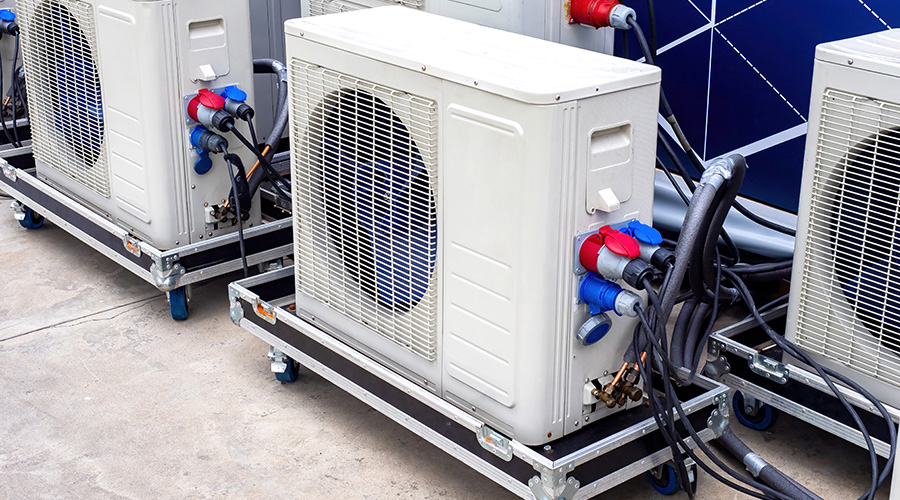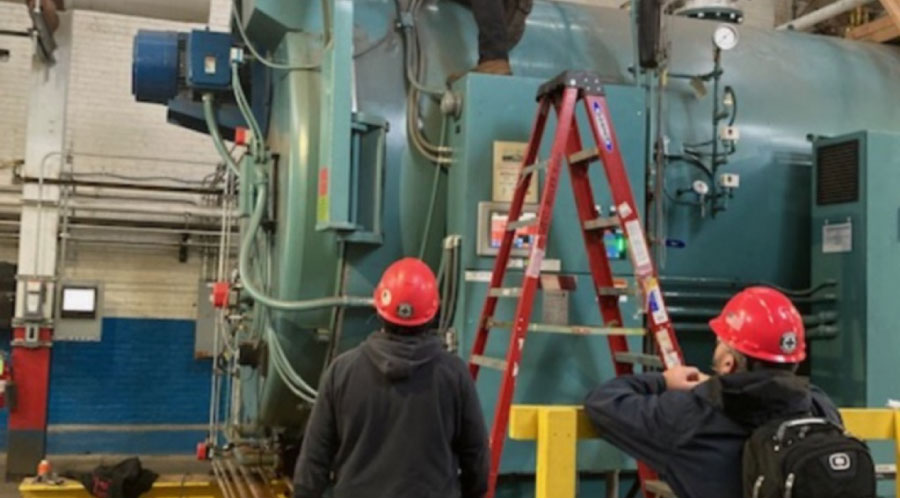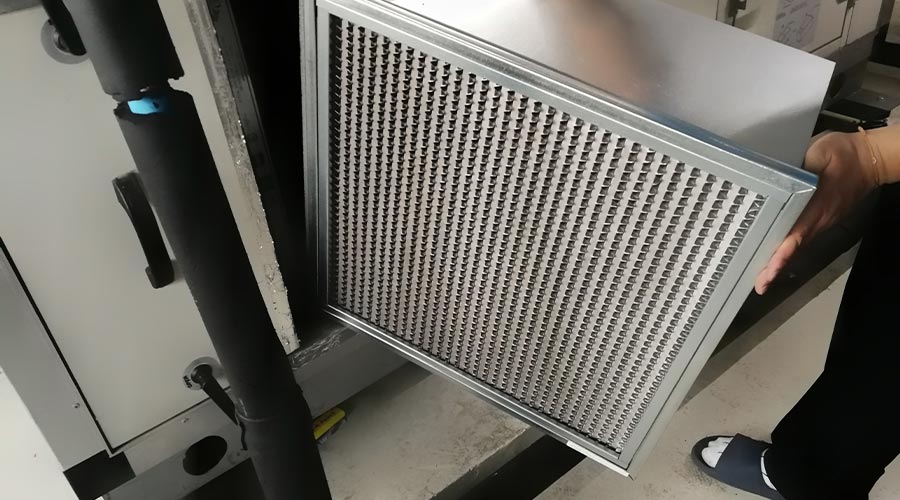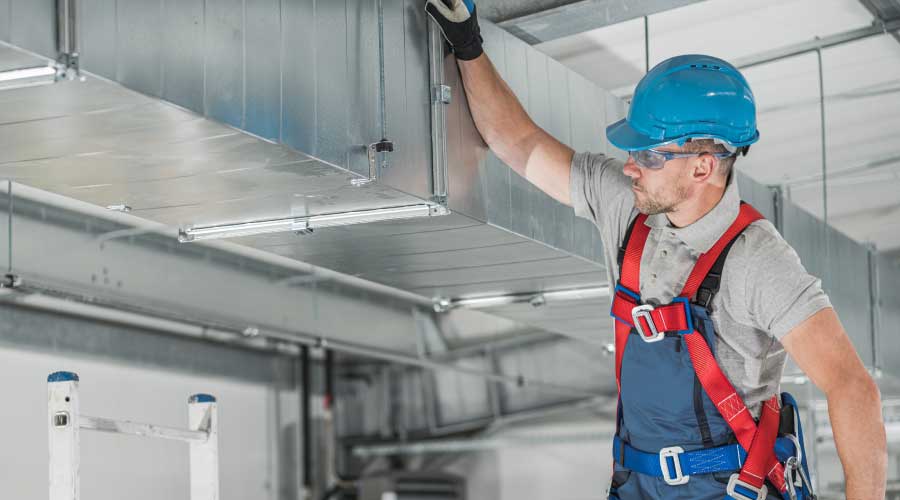HVAC
Correctly Done, Audits Lay the Groundwork for an HVAC Upgrade
As facilities age, many facility executives find themselves struggling to keep older HVAC systems and their components operating. Breakdowns, difficulty finding replacement parts, decreased system performance, changed user requirements and decreased energy performance all encourage facility executives to upgrade or replace their aging HVAC systems. But while facility executives understand the need for and benefits of system replacement, many have difficulty convincing those who control the organization’s budget of the need for funding.
Part of the problem is that a facility’s maintenance and replacement projects are usually a low priority for financial officers. Projects to replace or upgrade existing HVAC systems compete for funding with a wide range of other projects. If facility executives are to be successful in promoting their projects and gaining funding, they must level the playing field by speaking the language that financial officers understand. Sufficient information must be provided so that the need for HVAC system projects will be understood with the same level of clarity and urgency as other projects.
An additional problem to overcome is the common misconception that equipment that hasn’t failed will continue to operate satisfactorily in the future. There are two sides to this misconception that facility executives should address.
First, is the old “if it ain’t broke don’t fix it” belief. If things are running and building occupants are not complaining, why should the organization commit funds to replace a working system? It is the facility executive’s job to make financial officers understand why.
The second side of the misconception centers on the word “satisfactory.” Just because a system is running and maintaining some level of comfort does not mean that it is performing satisfactorily. It may suffer from frequent breakdowns, be energy inefficient, have hard-to-find replacement parts, or may not provide proper temperature and humidity controls for the activities being performed. Again, it is the facility executive’s job to make financial officers understand what satisfactory performance is and why a system may not be operating satisfactorily.
It takes time and a lot of work to build a case strong enough to convince funding officers of the need for a particular project. An effective tool for compiling and presenting the information needed is a comprehensive HVAC audit. The time and effort invested in the audit will pay for itself in the long run through improved system performance and reduced maintenance requirements.
Traditional HVAC Audits
The traditional HVAC system audit is a very detailed inspection of the system and its components. It has been used successfully to identify unreliable and inefficient systems and equipment and what is required to upgrade them to like-new operation.
It starts with gathering all available documentation on the system being audited, including drawings, balance reports, manufacturer’s data and maintenance records. Interviews are conducted with maintenance personnel who are responsible for the operation of the equipment and building occupants whose areas are served by the equipment.
The auditors then conduct a walk-through to examine the equipment and the areas served by the equipment. Maintenance items and system performance deficiencies are noted.
The findings of the audit are then presented in a report that summarizes how well the system is operating, what maintenance activities must be performed to return the system to like-new condition, the cost of those maintenance activities, the current and projected reliability of the system, and how much longer the system can be expected to operate.
When an audit is conducted facilitywide, it typically starts with large pieces of equipment that serve large areas within the facility — chillers, cooling towers, boilers, circulation pumps and piping systems. Once large equipment has been reviewed, the audit moves on to smaller systems serving specific areas within the facility — air handlers, exhaust systems, water heaters, secondary pumps and temperature control systems. These systems are typically audited in order of their importance to operations in the facility.
To make the process easier and more consistent, facility executives can use automated systems that allow users to gather, store and track numerical and system data. These systems perform a wide variety of calculations that can be used to estimate system reliability, costs and remaining economic life. Once the initial data has been entered, a condition baseline is established that can be tracked over time to identify how changes in the system are affecting its performance and service life.
Some audits specifically look at the energy implications of the system. They examine how energy efficient the existing system is, identify activities that would improve its energy efficiency, and evaluate the cost effectiveness of those measures. Most do not evaluate the energy use differences between a properly operating existing system and a new replacement system. As a result of improvements in HVAC technology, new systems are often substantially more energy-efficient than systems that are even as few as ten years old.
If a facility executive is to build the case for funding HVAC system replacement projects, the traditional HVAC system audit is necessary but not sufficient.
Although the traditional HVAC audit examines the reliability of the existing system, most fail to identify the impact of a system failure on the facility and its operations. Additionally, traditional audits generally do not identify all options available, such as overhauling, upgrading and replacing, nor do they quantify the costs, benefits and risks of each of those options.
Enhanced HVAC System Audits
The enhanced HVAC system audit takes the traditional audit several steps further. It not only collects and analyzes data on the condition of the existing system, but also examines several other key issues necessary to build the case for replacement funding.
For example, one of the most important issues in addressing system performance is how easily the system can adapt to changes in the facility’s operations. Older HVAC systems were typically designed and installed to meet specific operational requirements. Those operational requirements were not expected to change over the lifetime of the system. Today, however, building occupants, operations and needs are constantly changing. Modifying older systems to meet changing requirements can be expensive and disruptive.
If the system is not flexible, every time a change is made to the space, the system must be modified. That can mean moving ducts, changing air flows, installing new controls, installing new dampers, and even increasing fan horsepower. By contrast, in systems that are set up for flexibility, ductwork may have to be moved, but most other changes can be made by relatively simple programming changes to the system’s controls. If the case is being made to replace an existing system with one that is more flexible, then the costs of modifying the existing, less flexible system must be quantified and presented.
One of the tasks performed by traditional HVAC system audits is evaluating the reliability of existing systems. And while understanding what kind of problems are expected in the near future is important to those who work with the equipment, it does not mean much to those who are responsible for the overall operation of the organization. To be successful in selling the need to invest in a new HVAC system, the facility executive must translate reliability findings into something top management can relate to. That means showing not only the type of problems that are likely to occur, but also what the impact of those problems will be on operations. The facility executive should also show the benefits of a system upgrade or replacement.
Problems with HVAC systems also tend not to occur in isolation. A problem in one sub-system can cascade into other sub-systems and areas of the facility. Even areas not directly served by a particular system can be affected by its failure. And while some failures may not curtail operations, they may adversely affect the safety of the building occupants. Poor indoor air quality and potential contamination from adjacent operations are issues that must be addressed by the enhanced HVAC system audit.
For example, if a facility has a chiller that is more than 20 years old, has had several leaks plugged, and is becoming somewhat unreliable in its operation, present a summary of the data showing what the current problems are and how they are likely to get worse in the future. Identify the areas served by the chiller and what operations it supports. Show the impact of a chiller failure on these operations. If there is no backup chiller, make certain that is understood. Because chillers are not something that can be bought and installed overnight, estimate downtime and what the financial implications would be for the organization. Because new chillers have a much higher operating efficiency than those manufactured more than 20 years ago, project the energy savings that would be achieved by the replacement chiller. By promoting the HVAC system project in terms of financial costs and benefits, the enhanced HVAC system audit will speak to financial officers in terms that they understand.
The enhanced audit can also be used to support operations beyond just identifying replacement requirements. Once the baseline of system performance is established, periodic review of system conditions and how operations may have changed will allow facility executives to track performance and reliability. They will allow priorities to be established for system upgrades and replacements, help identify which systems should be renovated and which should be replaced, and show where changes will have to be made to the HVAC systems.
SALES PITCHES
Data Is the Key
Communicating the need for HVAC upgrades requires planning so that the legitimacy of the project is understood. When requests are presented to financial officers, make certain they are backed up with data. It is not enough to say that a system is unreliable if the existing system is still running. Identify problems that have been experienced to show that the system is unreliable, and if the frequency of the problems is increasing, show that as well.
The enhanced HVAC system audit provides facility executives with a powerful tool that they can use to seek funding for system upgrades and replacement. But facility executives should be careful how an audit is used. When information is presented, be careful not to be perceived as “crying wolf.” If every replacement project is presented as critical, it won’t take financial managers long to tune out. Critical projects must be backed up with sufficient data to demonstrate that they are critical, and those that are not critical must be presented accurately.
|
James Piper, PhD, PE, is a writer and consultant who has more than 25 years of experience in facilities management. He is a contributing editor for Building Operating Management.
Related Topics:











